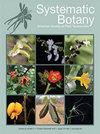The Genetic Diversity of Triploid Celtis pumila and its Diploid Relatives C. occidentalis and C. laevigata (Cannabaceae)
IF 0.8
3区 生物学
Q4 EVOLUTIONARY BIOLOGY
引用次数: 0
Abstract
Abstract The genus Celtis in eastern North America shows puzzling patterns of variation. While three species are generally recognized, many authors have suggested hybridization may be blurring the boundaries among them. Suspected hybridization between C. occidentalis and C. pumila has hampered conservation planning for the latter, which is a Threatened species in Canada. Using microsatellite markers and flow cytometry, we assessed the relationship between genetic diversity, ploidy, and morphology in this group. We confirmed the presence of two diploid species, C. occidentalis and C. laevigata, and that they do hybridize where they co-occur in southern Missouri and Illinois. We found two triploid genetic groups. These groups had distinct geographic ranges, but were morphologically very similar, corresponding to C. pumila. Furthermore, the triploid groups were characterized by a small number of heterozygous multi-locus genotypes. A single genotype dominated populations across Ontario, Michigan, Ohio, and Pennsylvania, indicating apomictic reproduction is common in these groups. While the triploid clusters were distinct from each other, they did have strong associations with sympatric diploid species, and also with the western triploid species C. reticulata. However, we found no evidence of hybridization or gene flow between diploid C. occidentalis and triploid C. pumila. This removes hybridization and introgression as a complicating issue for conservation management. The intermediate forms observed are a demonstration of remarkable phenotypic plasticity, with the same triploid genotype variously presenting as dwarf shrubs in xeric, exposed sites, and subcanopy trees in mesic forests.三倍体红藤及其二倍体亲缘植物C.occidentalis和C.laevigata(大麻科)的遗传多样性
北美东部的凯尔特人属显示出令人费解的变异模式。虽然一般认为有三个物种,但许多作者认为杂交可能模糊了它们之间的界限。加拿大的一种濒危物种——西斑蝽与美洲斑蝽之间存在杂交的嫌疑,这对美洲斑蝽的保护规划造成了阻碍。利用微卫星标记和流式细胞术,我们评估了这一群体的遗传多样性、倍性和形态之间的关系。我们证实了两个二倍体物种的存在,C. occidentalis和C. laevigata,它们在密苏里州南部和伊利诺伊州共同出现的地方杂交。我们发现了两个三倍体基因群。这两个类群的地理分布范围不同,但在形态上非常相似,与C. pumila相对应。此外,三倍体群体的特征是少数杂合多位点基因型。单一基因型在安大略省、密歇根州、俄亥俄州和宾夕法尼亚州的种群中占主导地位,这表明在这些群体中无融合生殖是常见的。虽然三倍体集群彼此不同,但它们确实与同域二倍体物种和西部三倍体物种C. reticulata有很强的关联。然而,我们没有发现二倍体西花蓟马和三倍体美洲蓟马之间存在杂交或基因流动的证据。这消除了杂交和渐渗作为保护管理的一个复杂问题。所观察到的中间形态显示了显著的表型可塑性,相同的三倍体基因型在干旱区、暴露地表现为矮灌木,在仲叶林中表现为亚冠乔木。
本文章由计算机程序翻译,如有差异,请以英文原文为准。
求助全文
约1分钟内获得全文
求助全文
来源期刊

Systematic Botany
生物-进化生物学
CiteScore
1.80
自引率
10.00%
发文量
72
审稿时长
6-12 weeks
期刊介绍:
Systematic Botany Monographs is a series of peer-reviewed taxonomic monographs and revisions published the American Society of Plant Taxonomists. ISSN 0737-8211, ISBN prefix 978-0-912861. No; volumes of Systematic Botany Monographs must be ordered separately. ASPT membership inludes only a subscription to the quarterly journal Systematic Botany. SBM is supported by sales, author"s subsidies, and donations.
 求助内容:
求助内容: 应助结果提醒方式:
应助结果提醒方式:


